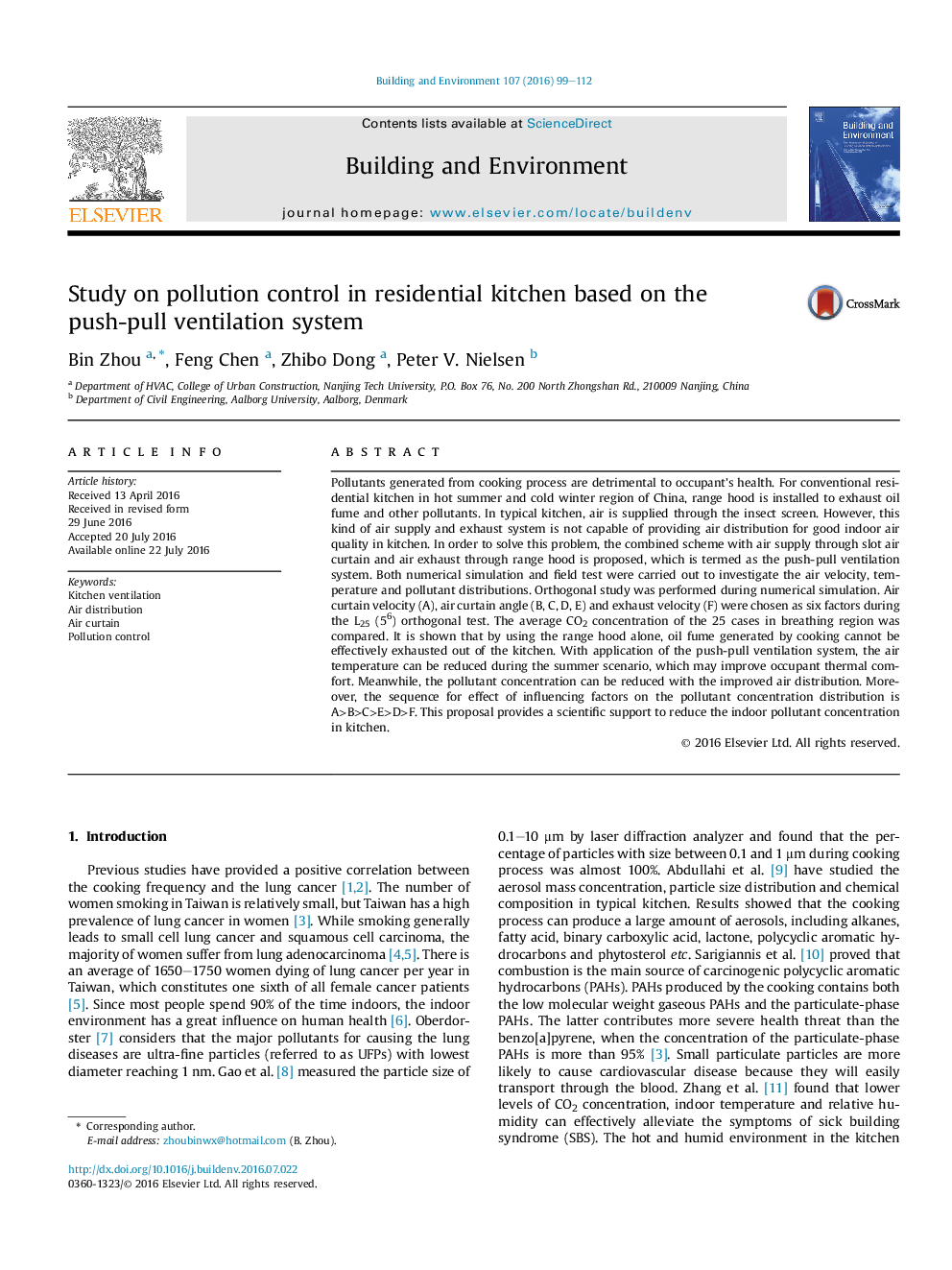| کد مقاله | کد نشریه | سال انتشار | مقاله انگلیسی | نسخه تمام متن |
|---|---|---|---|---|
| 247712 | 502516 | 2016 | 14 صفحه PDF | دانلود رایگان |
• The push-pull ventilation system is proposed to improve IAQ inside kitchen, where air is supplied through slot air curtain and then exhausted through range hood.
• CO2 reduction efficiency with application of air curtain in experiment and simulation in breathing zone was 23.7% and 23.1%, respectively.
• By orthogonal method, the influence of factors on pollution control of the push-pull ventilation system was presented.
Pollutants generated from cooking process are detrimental to occupant's health. For conventional residential kitchen in hot summer and cold winter region of China, range hood is installed to exhaust oil fume and other pollutants. In typical kitchen, air is supplied through the insect screen. However, this kind of air supply and exhaust system is not capable of providing air distribution for good indoor air quality in kitchen. In order to solve this problem, the combined scheme with air supply through slot air curtain and air exhaust through range hood is proposed, which is termed as the push-pull ventilation system. Both numerical simulation and field test were carried out to investigate the air velocity, temperature and pollutant distributions. Orthogonal study was performed during numerical simulation. Air curtain velocity (A), air curtain angle (B, C, D, E) and exhaust velocity (F) were chosen as six factors during the L25 (56) orthogonal test. The average CO2 concentration of the 25 cases in breathing region was compared. It is shown that by using the range hood alone, oil fume generated by cooking cannot be effectively exhausted out of the kitchen. With application of the push-pull ventilation system, the air temperature can be reduced during the summer scenario, which may improve occupant thermal comfort. Meanwhile, the pollutant concentration can be reduced with the improved air distribution. Moreover, the sequence for effect of influencing factors on the pollutant concentration distribution is A>B>C>E>D>F. This proposal provides a scientific support to reduce the indoor pollutant concentration in kitchen.
Journal: Building and Environment - Volume 107, October 2016, Pages 99–112
